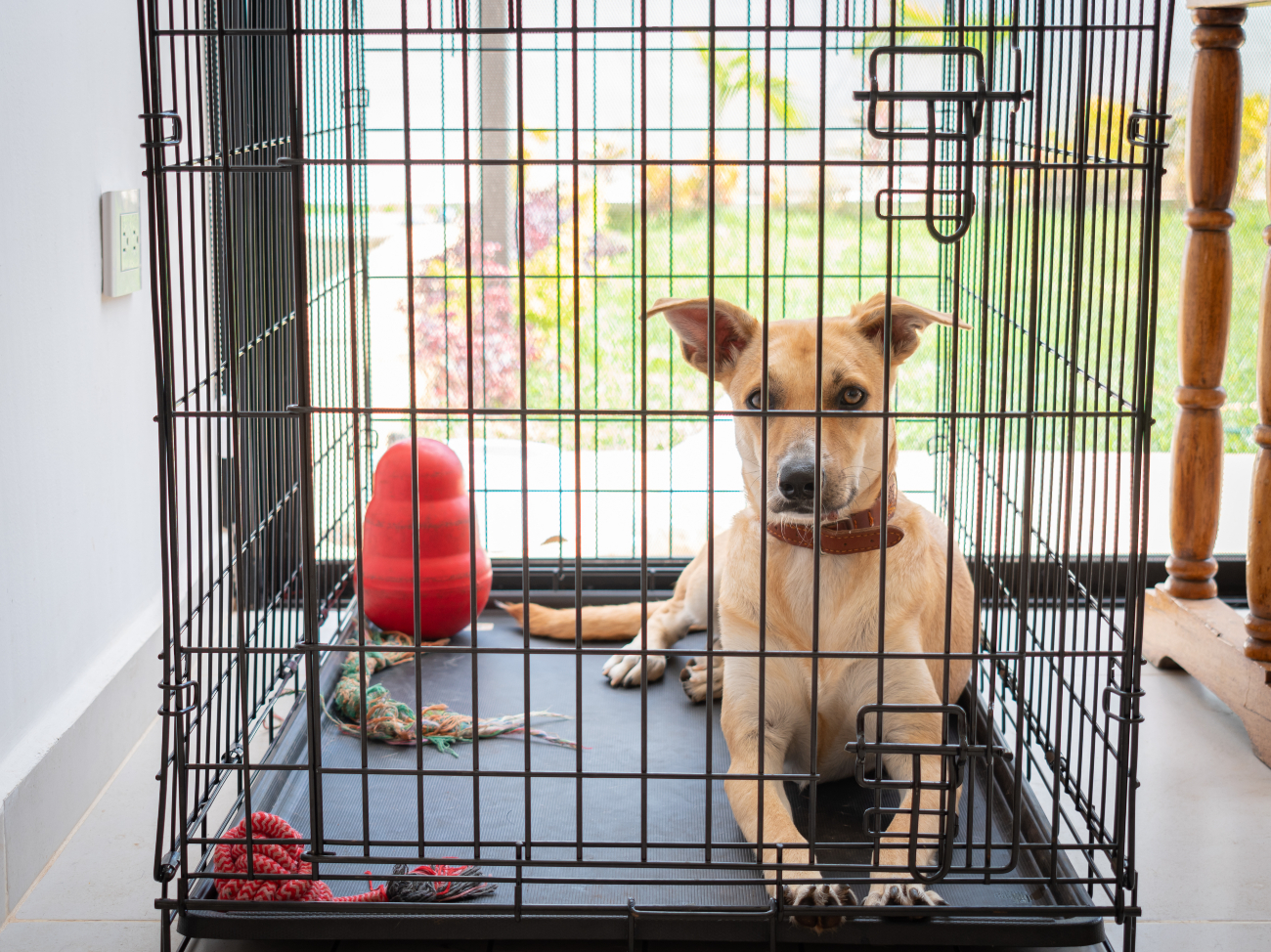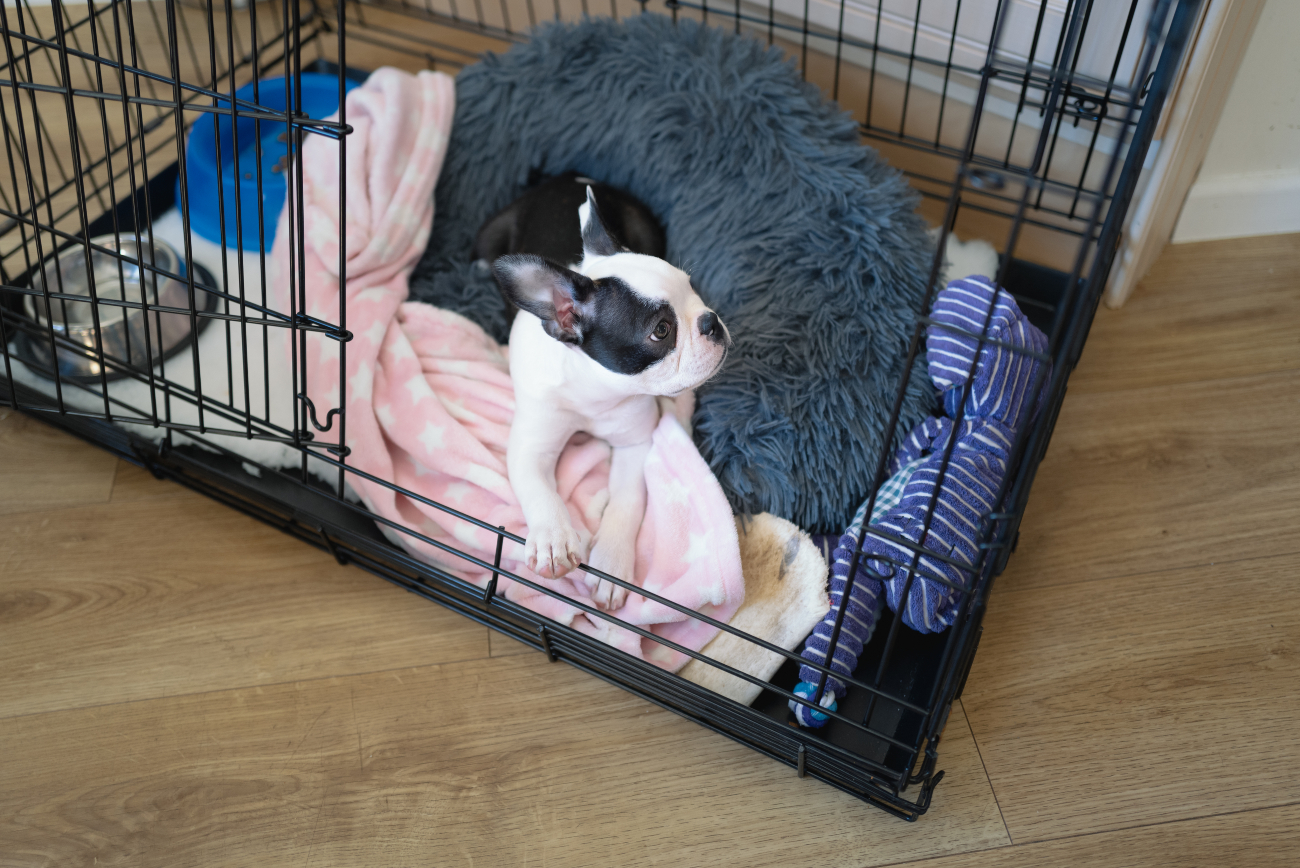How to crate train your puppy
30th April, 2024

Imagine the crate as a cosy den for your puppy, a safe haven where they can relax and feel secure. Crate training can be a game-changer in your pup's development, teaching them valuable skills and giving you peace of mind.
By following a few simple steps, you can make the crate a positive place your puppy loves. Remember, consistency is key, and patience is your best friend in this process.
With the right approach and a little time, you'll have a well-adjusted and happy pup who sees their crate as a comfy retreat. Let's dive into the world of dog crate training together!
Key takeaways
- Choose the right size crate for your puppy's comfort and future growth.
- Introduce the crate gradually with positive reinforcement to create a safe space.
- Incorporate short, consistent crate training sessions into your puppy's routine.
- Address any potty training or separation anxiety issues promptly and with patience.
Selecting the right crate
When selecting the right crate for your puppy, consider the size of the crate in relation to your puppy dog's age and current and future size.
The crate should be large enough for your puppy to stand up, turn around, and lie down comfortably. However, it shouldn't be too big; otherwise, your puppy might designate one end as a bathroom area. The crate size plays a crucial role in the crate training process.
The crate location is essential. Place the crate in a common area of your home where your puppy can still see and hear you. This will help your puppy feel more secure and prevent feelings of isolation. Avoid placing the crate near draughty areas or direct sunlight to ensure your puppy's comfort.
Now that you have selected the right crate to train your dog and determined its location, it's time to move on to setting up the crate properly.
Setting up the crate
To properly set up the crate for your puppy, position it in the designated area you have chosen, ensuring it's secure and stable for your puppy's safety and comfort. Here are some key steps to help you set up the crate effectively:
- Choose the right size: Make sure the crate is spacious enough for your puppy to stand up, turn around, and lie down comfortably.
- Add bedding and toys: Place comfortable bedding and some of your puppy's favourite toys inside the crate to make it a cosy and inviting space.
- Introduce gradually: Start by leaving the crate door open and encouraging your puppy to explore it at their own pace before gradually introducing dog crate training techniques.
Setting up the dog's crate properly is crucial for successful crate training. By following these steps, you can create a safe and comfortable environment for your puppy, ultimately reaping the crate training benefits of providing them with a secure space to relax and feel at ease.
Introducing your puppy to the crate
Ensure that your puppy feels comfortable and secure in the crate by gradually introducing them to it with positive reinforcement and encouragement. The crate training method involves making the crate a pleasant place for your puppy to be and associating it with a positive experience. Crate training benefits include providing your puppy with a safe space to retreat to, aiding in-house training, and promoting good behaviour when you're away.
To introduce your puppy to the crate, start by placing treats or their favourite toy inside to entice them to explore. Leave the door open initially so they can enter and exit freely.
Encourage your puppy to spend a few minutes or short periods of time in the crate, gradually increasing the duration as they become more comfortable. Make sure to praise and reward them for entering the crate voluntarily.
Transitioning adult dogs into a crate training schedule involves establishing set times for your puppy to be in the crate, and incorporating it into their daily routine.
Crate training schedule
To establish a successful crate training schedule for your puppy, gradually incorporate crate time into your dog's life and daily routine. Remember, consistency is key when crate training.
Here's a guide to help you create an effective schedule:
- Start slow: Begin by putting your puppy in the crate for short periods while you're at home. This helps them get used to the crate without associating it with being alone.
- Incorporate potty training: Take your puppy outside to potty before and after crate time to reinforce good potty habits.
- Engage in crate games: Make crate time fun! Use crate games like hiding treats inside or playing with interactive toys to make the crate a positive space for your puppy.
Should you crate a puppy at night?
This question has been a point of contention among pet owners for years. Some firmly believe in the practice, while others see it as cruel. The truth is, crating your furry friend at night can provide a host of benefits, not only for you but also for your pet.
Crating can give your puppy a sense of security and comfort. Dogs are den animals by nature, and a crate can provide a similar safe space for them in your home. It's important to remember that the crate should never be used as a form of punishment - it must always be a positive place.
Crating can assist in house training as puppies will not want to soil their sleeping area. It can also prevent destructive behaviour or accidents from happening overnight when you're not able to supervise.
However, the key to successful crating lies in moderation and proper training. Puppies should not be left in their crates for extended periods. They need plenty of exercise and social interaction throughout the day.
Troubleshooting common crate training issues
Addressing common crate training issues requires patience and understanding. When it comes to potty training problems, remember that young puppies have small bladders and may need to go out frequently.
Ensure you stick to a consistent schedule for bathroom breaks and positively reinforce good behaviour. If accidents happen, clean them thoroughly to remove any scent that may attract your puppy to repeat the behaviour.
Separation anxiety can also be a challenge during crate training. To help your puppy overcome this, gradually increase the time they spend in the crate when you're home.
Conclusion

Now that you've learnt the ropes of crate training a puppy, you're ready to embark on this journey with your puppy. Remember, like a compass guiding a ship through stormy seas, the crate will provide safety and security for your furry friend.
For a puppy insurance quote for your furry friend, you can get a quote through our website. If you would like to talk to one of our puppy insurance specialists, you can get in touch with us on 0330 102 5748.
Stay patient and consistent, and soon enough, your puppy will see the crate as their own little sanctuary. Happy training!
Frequently asked questions
How do I know if my puppy is experiencing anxiety or stress while in the crate?
If your puppy shows signs like whining, barking, or pacing in the crate, they might be experiencing separation anxiety. Try behaviour modification techniques and gradual desensitisation to help them feel more comfortable and secure.
Can I leave my puppy in the crate for an extended period of time while I am at work?
You should not leave your puppy in the crate for an extended period while at work. Pet parents must balance crate training benefits with alternatives like hiring a dog walker for adequate exercise and companionship. You may also want to consider ways to keep your pet entertained while you are at work, check out our blog for ideas on how to do this.
Should I cover the crate with a blanket or leave it open for the puppy to see out?
Covering the crate with a blanket can create a cosy den-like environment for your puppy, promoting a sense of security. However, leaving it open allows visibility, aiding in crate training success by helping your puppy feel less confined.
What should I do if my puppy has an accident in the crate?
If your puppy or dog has accidents in the crate during potty training, ensure the crate isn't too big, stick to a consistent schedule, and clean accidents thoroughly. Avoid punishing your pup; instead, focus on positive reinforcement for training success.
Is it okay to use treats or toys to encourage my puppy to go into the crate?
Using treats or toys to encourage crate training can be effective. However, crate training without rewards is possible too. Consistency and positive reinforcement play a crucial role. Reward your puppy when they willingly enter the crate to create a positive association.
Helpful Pages
Recent Posts
Pet Insurance Quote
- 98% claims paid *
- Claims paid directly to vets
- 24/7 vet video consultations
- Interest free monthly payments




